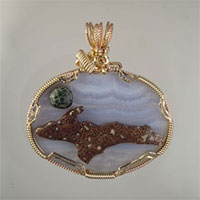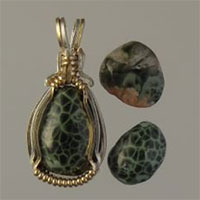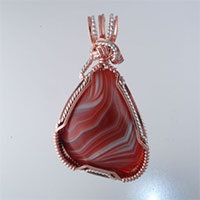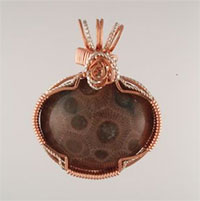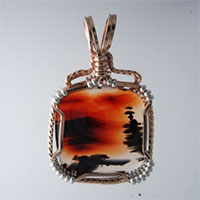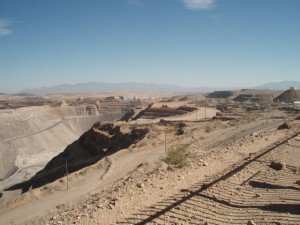
Giant Pima Mine with mill complex in background
Eighteen miles south of Tucson near the town of Sahuarita is the giant Pima copper mine. Currently the mine is 2.5 miles long by 1.5 miles wide and approximately 1200 feet deep. Each bench within the mine is 40 feet high. In 2012 the mine produced 134.3 million pounds of copper, in concentrate.
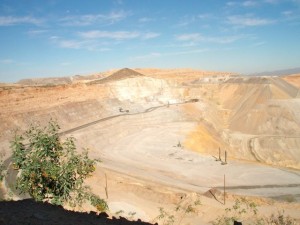
The Pima Mine is part of the Mission Complex of mines.
Unlike the mines in the Copper Country of Michigan where large solid masses of native copper where the norm, the copper in the Pima mine is microscopic and is extracted from the ore by crushing the rock four times in ball mills which resemble large rock tumblers and the copper ore is crushed by steel balls within the tumblers for copper extraction, until it is a dust-like concentrate. When the metal is extracted the remaining crushed rock is hauled away to huge waste piles and the copper concentrate is sent by truck to a mill in El Paso where copper plates are formed. Also in this concentrate is small amounts of gold, silver and molybdenum. Enough of these minerals are extracted to pay the almost $2 million electric bill each month!
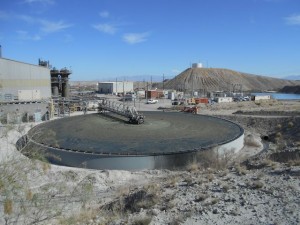
Floating Copper??
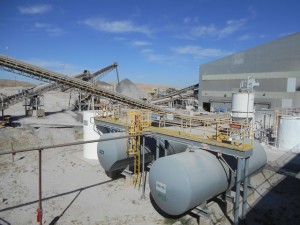
Pine Oil made the Ball Mill smell squeaky clean.
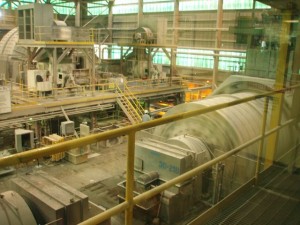
Giant Ball Mills crush the copper bearing ore in three stages.
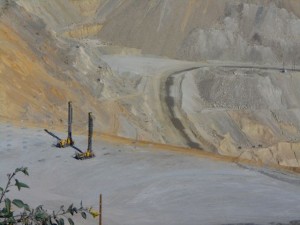
Blast hole drills.
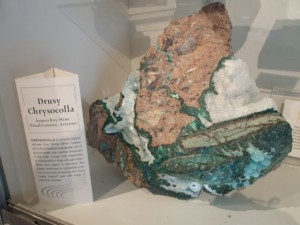
I love this stuff from the Ray Mine.
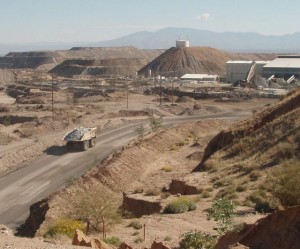
Giant dump trucks look small in the distance.
Giant dump trucks that are so big they need to be brought in in parts and assembled onsite work up and down the ledges within the pit. After being loaded with copper ore by a gigantic electric crane the copper ore is transported to the onsite Ball Mill building. When the pit is so massive and deep when you look at the trucks from the top, they appear to be very small, but standing next to them, you would see that one tire is around 12 feet tall.
We saw a large area within the mine where drills were working to make holes for explosives. Each day between noon and three explosives are set off in the mine. Their job is to lift the ground up and then settle right back down, loosening the ground so that the giant shovels can do their work. The reserve life of the Mission Mine which includes the Pima Mine is 2033.
No harsh chemicals are used at this mine. This fact is stressed by the tour guide. Some mild acid is used, but the extraction of copper concentrate takes place in giant open vats where the copper floats to the top and is skimmed off and dried to form the copper concentrate. How does copper float in water? The answer is old technology used in washing miner’s clothes! A wash lady discovered that by adding pine oil to the soap the tiny bubbles would float to the top with attached dirt from the miner’s dirty clothes. The mine uses this same technology using pine oil to float copper to the top, skim it, and the oil is recirculated to combine and rise again.
ASARCO (American Smelting and Refining Company) Grupo Mexico obviously the company started out as an American owned company but was bought out by Grupo Mexico. They have been producing copper for over 100 years. Beside the Mission Mine complex the company also owns the Silver Bell and the Ray Open Pit Mines in Arizona.
From a rockhound standpoint other interesting copper related minerals are occasionally found in the Pima and other mines of Arizona. Those include malachite, azurite, cuprite, chalcopyrite, some other arsenides, and rare earth minerals. It seems unusual to me that the Arizona mines have slightly different associated minerals than Michigan mines. Datolite, Chlorastrolite, Mohawkite, and Prehnite are distinctive to Michigan mines.
If you get a chance and are in the Tucson area, this is an interesting and inexpensive tour to take.


